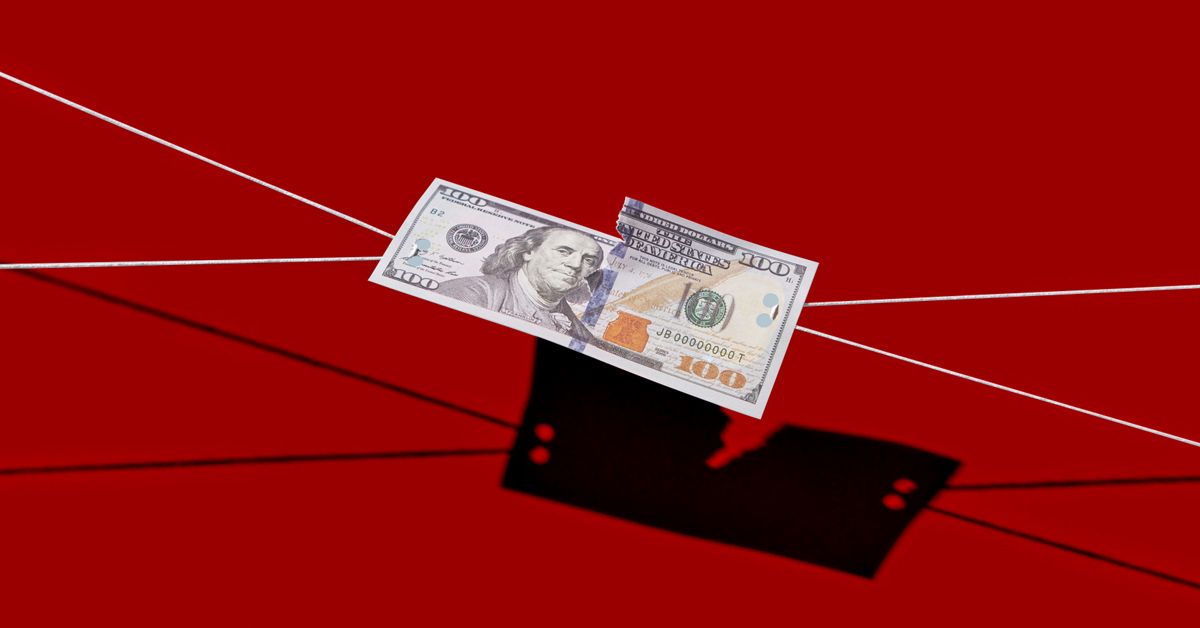$465 billion lost in global financial stocks. Billions of dollars belonging to companies and investors stranded. An immediate drop in Dow Jones, S&P 500 and the Nasdaq Composite. All of this (and more) is the result of the sudden collapse of the start-up focused lender SVB Financial Group, also known as Silicon Valley Bank.
As the 16th largest bank in the United States, with $209 billion in assets at the end of 2022, SVB marks the largest bank failure since the 2008 financial crisis. The question now is whether this is contained or a contagion.
“This was just a good old fashioned bank run,” says Chief Member Kimberly DeCarrera, Outside General Counsel at DeCarrera Law, LLC. As a lawyer who works with small and growing companies, DeCarrera says she has a number of clients who were directly impacted by this collapse. And while there has been much finger-pointing for the bank’s downfall, the failure can largely be attributed to a lack of oversight resulting from the 2018 regulatory rollbacks.
“Traditionally, banks don't have liquid assets on hand because they take your deposits and they loan them out to other people, collecting the interest, which is how they pay you and buy other investments,” she says. “For SVB, they were mostly in residential mortgage-backed securities and treasuries. So they've got these bonds with really low interest rates because they bought them about two years ago before the interest rates went up.”
This investment strategy became a problem when interest rates started to rise and the economy took a downturn. SVB, which is nearly exclusively concentrated in the venture capital and tech space, began to face issues when more startups started to tap into their cash reserves to survive today’s economic changes. As a result, the bank developed a liquidity issue, which forced them to sell their bonds at a higher interest rate, leading to a profit loss of $1.8 billion.
SVB tried to shore up its balance sheet by raising capital. Failing, they went up for sale — and investors got spooked. When word got out that SVB was in trouble, the biggest VCs advised their portfolio of companies to withdraw their money, triggering a mass bank run. With the Federal Deposit Insurance Corporation (FDIC) only insuring accounts up to $250,000, founders were at risk of losing access to their cash to make payroll or rent.
“We know the venture capital community is very close-knit. They had their Slack channels and their text chains and their email lists. So when one got spooked, they all got spooked and you had a lot of people with really large balances all going to the bank saying, ‘Give me my money right now.’”
It took just 48 hours for the bank to collapse and end up in the control of the FDIC. The aftermath rippled across other regional banks, with investors beginning to dump bank stocks. Founders who lost access to their capital over the weekend turned to their customers, announcing site-wide sales to get their hands on immediate cash flow. To contain the crisis, the Federal Reserve, along with the FDIC and Treasury Department, announced depositors will regain access to all of their money, not just the insured $250,000.
While not as rapid or dramatic as SVB’s demise, bank collapses are nothing new, with data showing a grand total of 532 bank failures between 2008 and 2019. With crises like these happening more often than people are aware, DeCarrera says she’s advising her clients of the many different ways in which they can protect themselves, their business, and their assets now.
Safeguarding Yourself
“The first thing I’m advising my clients to do is have multiple bank accounts whether it’s because you’ve decided that your bank is risky from a financial sense or because of the fact that you just never know when a ransomware is going to hit,” DeCarrera says.
In your second account, she advises business leaders to have enough money to cover at least one whole payroll cycle if their finances allow it. “So that includes all of your taxes and your 401k,” she says, while adding that business owners should also have one month’s operating expenses stashed there as well. “This includes your rent, your software, and any other expenses that you have.” Both accounts, she says, should be set up with your payroll system so that if something goes wrong with the primary account then you can seamlessly pull from the secondary.
“Think about it from a personal level,” she says. “You try to set up something with your credit card to pull from your bank. Verification can take two or three days, right? So with your business let's go ahead and get that second account verified ahead of time so that you have a very quick failover if any situation happens.”
In addition to diversifying your banking portfolio, DeCarrera says business leaders should also be mindful to protect large balances of money that are above the $250,000 FDIC-insured limit.
“In the case of SVB, they made the depositors full, but they're still working things out with lines of their credit and whether there's offsets so people may not actually be able to get all of their cash out soon,” she says. That’s why she suggests leaders use products like a sweep account to protect large sums of unused money.
“So you'll use one bank, but on the back end that bank takes your deposits and puts them in multiple accounts,” she explains. “So all of the accounts have their own FDIC-insured $250,000 limit. And then, when you need the money, the next day they'll pull it back in and you will have it available for whatever cash you need.”
Chief Member Kate O’Neill, a veteran financial executive who’s worked for organizations like SilkRoad Technology and Florists’ Transworld Delivery, says that diversifying your bank options is indeed critical. But beyond that, looking at the many health and socio-political crises we’ve faced through recent years should also teach leaders that a crisis management team is mandatory. At SVB, it’s reported that no official Chief Risk Officer was in place for eight months, a negligent oversight that many say contributed to the bank’s downfall.
“We're talking about a specific bank issue, but it's wider than that.” O’Neill posits: What's your crisis management plan? Because you’re going to need one.
“Know how you're going to make decisions. Know when you need your board involved. Know how to reach your board very quickly and have a general crisis management plan in place. As a startup, you're doing lots of things. It's easy to get distracted, but we've learned a lot in the last three years and we certainly learned that crises will happen. You might not know the answers and you might not know the topic, but you’ll need a crisis management team.”
For DeCarrera, she says she’s not worried about another 2008 financial recession happening, despite SVB’s collapse sowing doubts.
“I don't have that fear that this is going to be where every bank is at risk,” she says. “I think that SVB, and Signature Bank, and Silvergate too, all had a very specific set of circumstances that made them more vulnerable. I think our bigger banks and our banking system as a whole is safe. Right now, I'm not seeing anything where it’s like, ‘Okay, we need to go take all our cash out and put it in our mattress.’”
As crises often go, it’s well assumed that SVB’s failure had a disproportionate impact on women and people of color, because for some, it was likely the only bank option they had due to longstanding discriminatory lending practices. While there is no data around the demographics of SVB’s depositors, the bank has been named to Bloomberg’s gender equality index for five years in a row.
For women where it’s even more difficult to gain that initial investment (in 2022, women founders received 1.9% of all venture capital), it’s that much more critical to safeguard your assets. For more resources on how to respond to a bank failure and protect your money, check out DeCarrera’s blog post here and Morgan Stanley’s Safeguarding Your Deposits report from Chief Member Ana Munro, SVP Wealth Management at Morgan Stanley.



